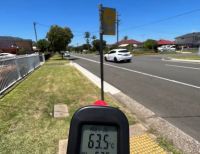“We were surprised to find fewer connections between the hippocampus and frontal cortical areas, and more connections with early visual processing areas than we expected to see,” said Dr Marshall Dalton, a Research Fellow in the School of Psychology at the University of Sydney. “Although, this makes sense considering the hippocampus plays an important role not only in memory but also imagination and our ability to construct mental images in our mind’s eye.”
The study was published in the journal eLife.
The hippocampus is a complex structure that resembles a seahorse and is tucked deep within the brain. As a vital component of the brain, it is important for memory formation and plays a key role in the transfer of memories from short-term to long-term storage. But it also plays a part in navigation, imagining fictitious or future experiences, creating mental imagery of scenes in the mind’s eye, and even in visual perception and decision making.
To generate their map, the team – led by Dr Dalton and including Dr Arkiev D’Souza, Dr Jinglei Lv and Professor Fernando Calamante from the University of Sydney’s Brain and Mind Centre – relied on MRI scans from a neuroimaging database created for the Human Connectome Project (HCP), a research consortium led by the U.S. National Institutes of Health.
They processed the existing HCP data using tailored techniques that they developed. This allowed them to follow the connections from all corners of the brain to their termination points in the hippocampus – something that had never been accomplished before in the human brain.

















